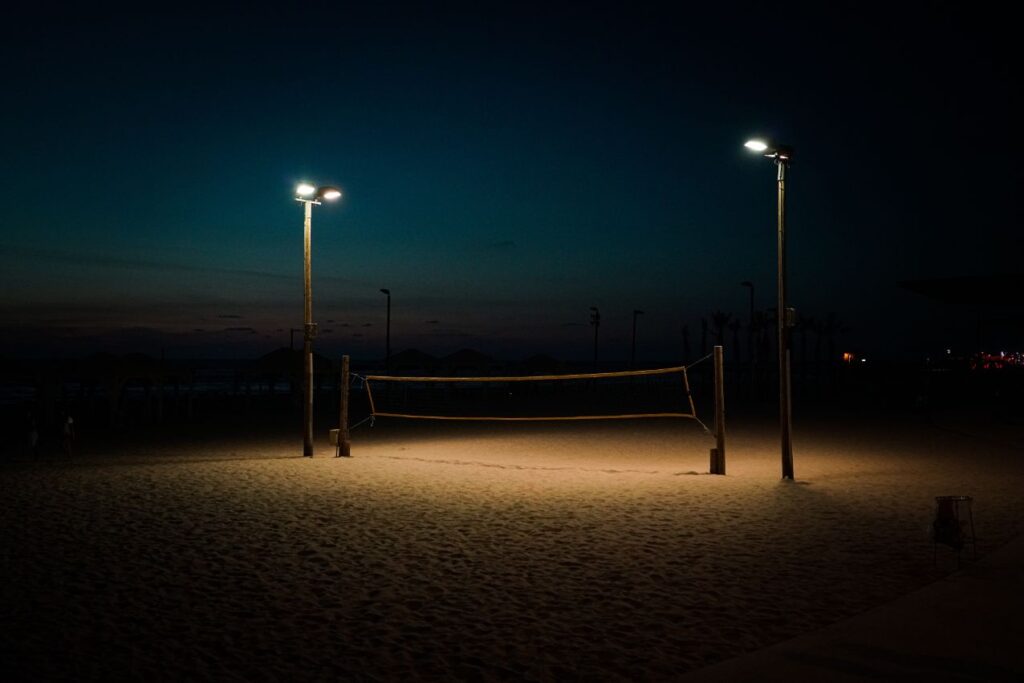Modern outdoor lighting is available to us today, and one of the best illustrations of how far these lights have developed is floodlighting. Floodlights provide a variety of lighting options to protect both residential and commercial properties from conceivable criminal activity. But do you understand what a floodlight is exactly? Please continue reading if you’re interested in learning more about the floodlight.
What Is A Floodlight?
An artificial source of light with a wide beam is the floodlight. In areas where a lot of artificial light is required, floodlights are most frequently found. A big parking lot, venues for performances like concert halls or theaters, and open fields for sports are a few examples of these areas.
Even if a stadium wants to host a game during the day, some professional sports require floodlights to be installed. Floodlights are advantageous for television broadcasts as well as for improving player visibility.
Even though the majority of sports venues have permanent floodlights, some also use temporary, portable ones.
While the term “floodlights” should only be used when referring to extremely powerful beams of light, people now also use the term to describe strong outdoor fixtures they install in their own backyard.
Read More: 8 Best Solar Flood Lights 2022
Purpose Of Flood Lighting
The floodlighting may be employed for the following purposes −
- to make the ancient monuments’ nighttime beauty even more stunning.
- to provide lighting for areas like parking lots, sports arenas, and construction sites.
- to illuminate the display cases and advertising boards, etc.
How Are Floodlights Used?
As the variety of this product has greatly increased over the past few years, floodlights can also be used to light up your own front or back yard.
Floodlights differ from other types of light not only because of their wide light angle but also because they must withstand weather conditions like rain and frost. Because of this, floodlights must be much more resistant than indoor lights.
Benefits Of Floodlights
Energy Efficiency
Energy efficiency, which allows LED lighting to produce more wattage without using more power, is what distinguishes it from other types of lighting. They perform at their peak, can illuminate a sizable area, and are very affordable.
Lepro 30W Outdoor LED Flood Light, for instance, can reduce your electricity use by 70% and is equivalent to 100W Metal Halide.
High Lumen Output
Lumen output, for those who are unaware, refers to how bright a light source is. The output of the light source increases with its brightness.
Manufacturers installing LEDs in floodlights is only logical given that LEDs are renowned for producing a high lumen output.

Cooler Thermal Output
The heat they produce, which makes it challenging to touch when a need arises, is one of the disadvantages of many commercial lighting sources. Since their thermal management system generates less heat, LED lights are much cooler. With high heat being a problem, this is unquestionably advantageous at ports or manufacturing facilities.
Eco-Friendly
People are becoming more and more aware of environmental harm. In order to fulfill their desires without further endangering the environment, they are turning to eco-friendly products.
Since LED lights don’t contain any hazardous materials like glass, mercury, or lead, they are an environmentally friendly source. Consequently, they are secure in any situation.
Where To Install Floodlights?
The driveway, walkway, backyard, or play area like a tennis court are all suitable locations for installing floodlights if you want to cover a sizable area. Floodlights can be installed in many different locations. What are some of these locations that are not houses or businesses?
- Ports – Ports require a lot of light to function because they are open all the time, 24 hours a day, seven days a week.
- Industrial Buildings – Industrial locations require a lighting system with plenty of intensity because they are open 24 hours a day, 7 days a week.
- Monuments and Architectural Building – When there are landmarks and impressive buildings for tourists to explore, a location becomes more valuable. With the help of floodlights, you can illuminate them at night and enhance their beauty. It also discourages potential criminals from vandalizing these locations. They are emphasized using various lighting techniques, such as accenting or wall-washing.
- Facade Lighting – Given that it typically faces the street, the front half of a building is one of the most important areas to keep lit. It is frequently employed to highlight a crucial feature of the front, such as the company sign or logo.
What Things Should You Keep In Mind When Installing Flood Lights?
When installing flood lights, the following elements need to be taken into account:
- How high should the flood light be mounted? In general, you should raise the flood light 5 meters in the air for every 10 meters of ground you want to illuminate.
- How far apart you should space the floodlights is called spacing. Floodlights ought to be spaced apart by 4 times the vertical height as a general rule.
- Aiming: point the floodlight in this direction. The floodlight should generally be pointed at a point that makes up 2/3 of the area you want to light.
How Can I Pick The Best Flood Light?
- When selecting a flood light, keep the following things in mind:
- Lumens: how bright it is
- CRI: how realistic color appears
- Colour Temperature: cool white, warm white, or daylight white
- IP Rating: how waterproof it is
- IK Rating: can it handle impact and vandalism
- Beam angle: how broadly the light is projected
- Voltage: whether it is 240V or 12V
Conclusion
A floodlight is the ideal lighting solution for big spaces like stadiums, amphitheaters, and enormous parking lots, but they have also found their way into homeowners’ yards. Flood lights are widely used and have a wide range of uses. There are some primary and secondary uses for these lighting fixtures.
